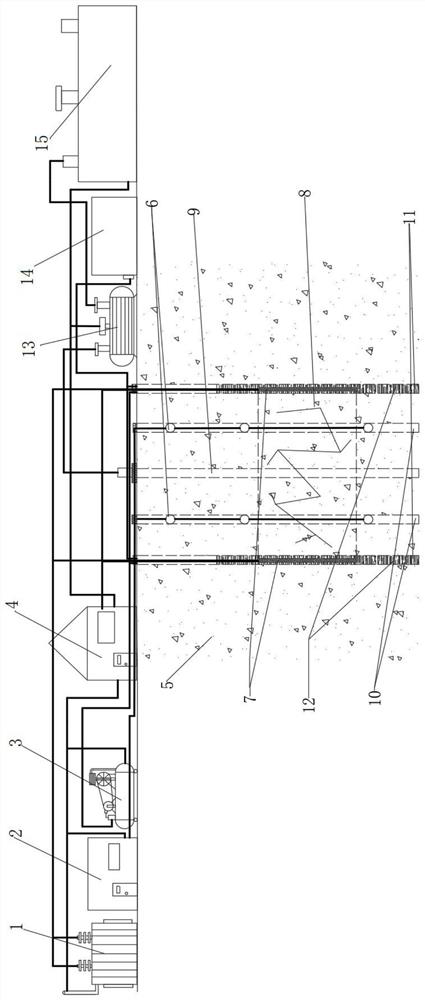In-situ electric heating desorption method for soil organic pollutants
A technology of organic pollutants and electric heating, applied in the field of thermal desorption of organic pollutants polluted soil, can solve the problems of inconvenient construction and installation, non-reusable use, high cost of resistance rods, etc., and achieve the goal of improving efficiency, increasing conductivity, and expanding the radius of influence Effect
- Summary
- Abstract
- Description
- Claims
- Application Information
AI Technical Summary
Problems solved by technology
Method used
Image
Examples
Embodiment Construction
[0019] In order to make the purpose, features, and advantages of the present invention more obvious and understandable, the technical solutions in the present invention are clearly and completely described below in conjunction with the drawings in the embodiments of the present invention. Obviously, the present invention is not limited by the following examples, and the specific implementation manner can be determined according to the technical solutions of the present invention and actual conditions. In order not to obscure the essence of the present invention, well-known methods, procedures, procedures, components and circuits have not been described in detail.
[0020] Such as figure 1 As shown, the soil organic pollutant in-situ electric heating desorption method proposed in the present invention is based on the soil organic pollutant in-situ electric heating desorption system, including a high-voltage power frequency heating system, a ground control system and a waste tre...
PUM
 Login to View More
Login to View More Abstract
Description
Claims
Application Information
 Login to View More
Login to View More - R&D
- Intellectual Property
- Life Sciences
- Materials
- Tech Scout
- Unparalleled Data Quality
- Higher Quality Content
- 60% Fewer Hallucinations
Browse by: Latest US Patents, China's latest patents, Technical Efficacy Thesaurus, Application Domain, Technology Topic, Popular Technical Reports.
© 2025 PatSnap. All rights reserved.Legal|Privacy policy|Modern Slavery Act Transparency Statement|Sitemap|About US| Contact US: help@patsnap.com

